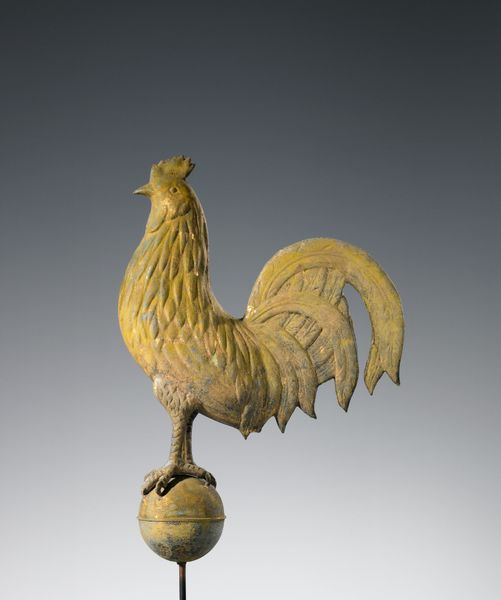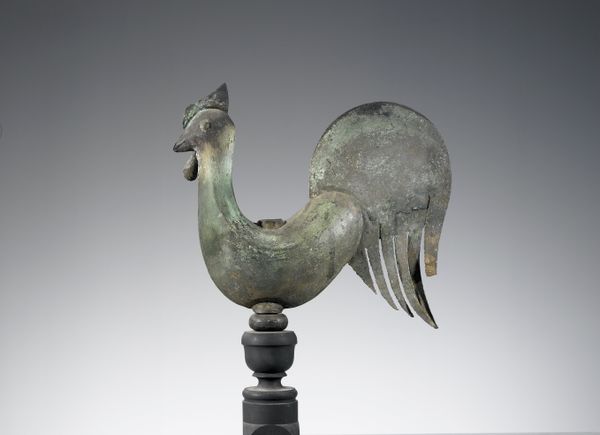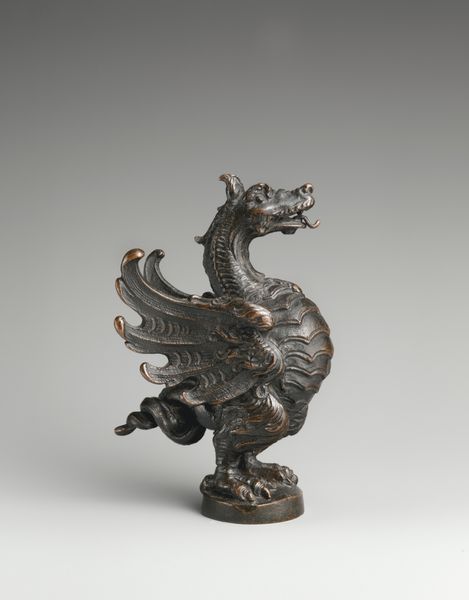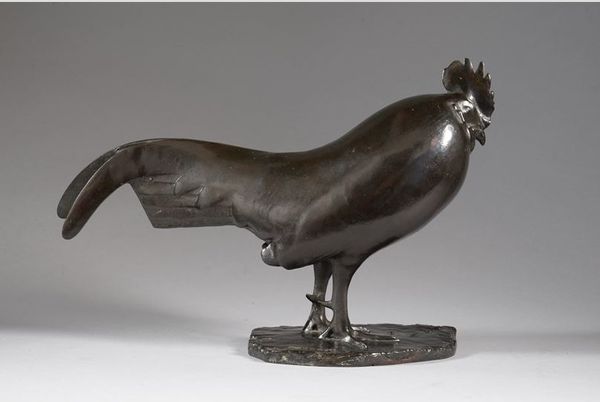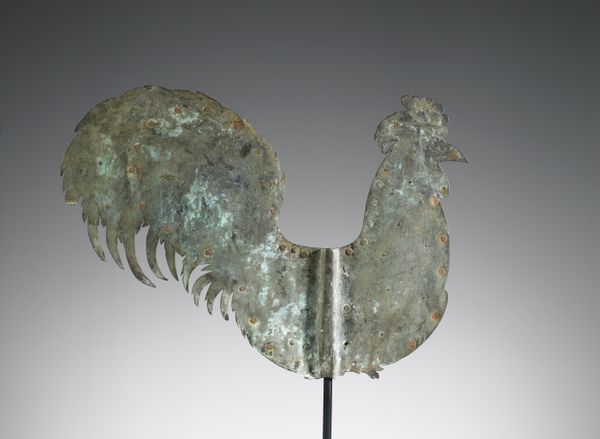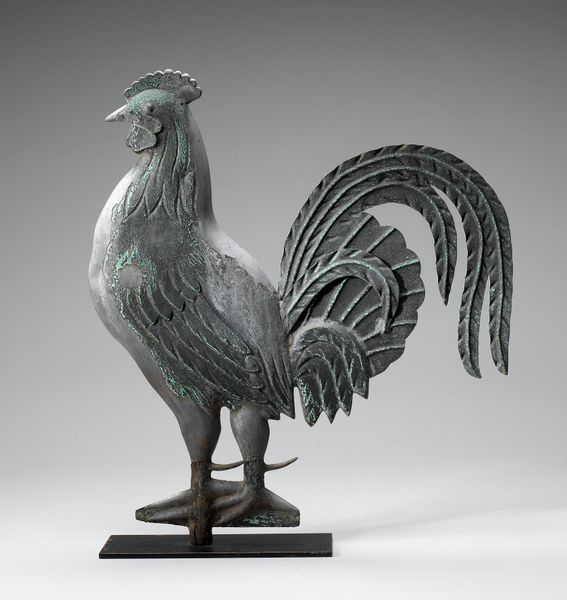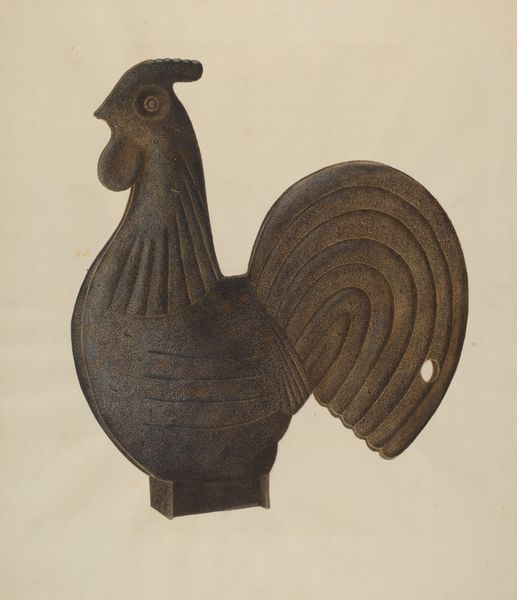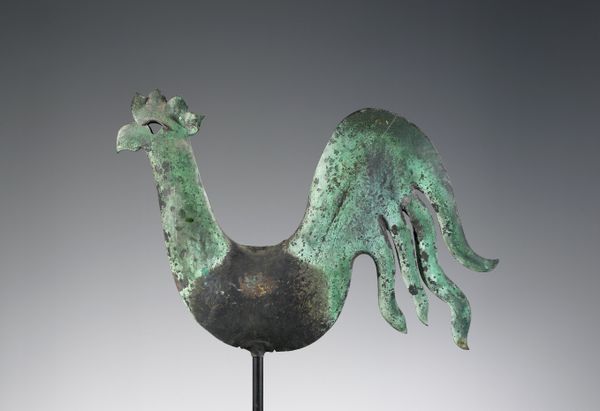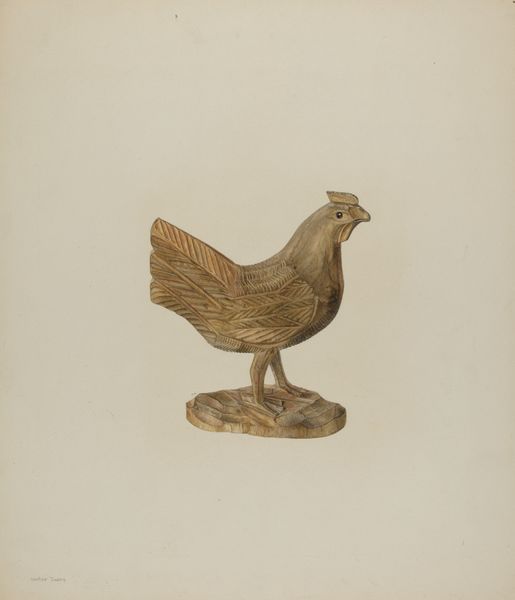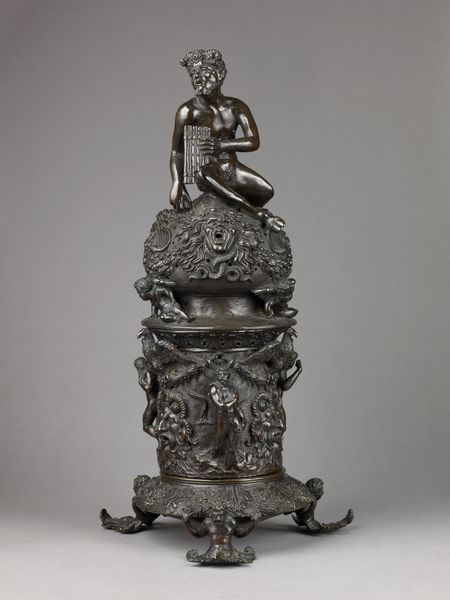
metal, found-object, sculpture
#
metal
#
sculpture
#
found-object
#
sculpture
#
united-states
#
decorative-art
Dimensions: 28 9/16 x 25 3/4 x 5 1/2 in. (72.55 x 65.41 x 13.97 cm) (including attached base)
Copyright: Public Domain
Editor: Here we have the "Rooster Weathervane," created around 1855 by J. Howard & Company. It’s made of metal, giving it an almost solemn, weathered appearance. The craftsmanship is fascinating – you can really see the seams and construction. How do you read the composition of this piece, considering its design and function? Curator: Its formal qualities reveal much about its function. The rooster's silhouette, boldly defined, is paramount. Note how the design achieves dynamism even in stillness. The metal reads almost like language: consider the patina’s textured surface, the geometry and balance achieved. How might this impact our interpretation? Editor: I suppose the weathering adds depth to the material itself. The cut-out shapes of the rooster's comb and tail are interesting. It’s simplified, but recognizable. Curator: Precisely. That simplicity speaks to the object’s intended placement, high above, meant to be discerned from a distance. The materiality itself also communicates. The artist's careful considerations give texture and depth. It offers the work another level of understanding, doesn't it? Editor: Yes, that makes sense. I hadn't thought about how its visibility from afar informed its design. Looking at it this way, the strong lines and shapes feel like a necessary visual language. Curator: Indeed. We begin to understand its deeper, underlying logic when we examine it formally. The interplay of positive and negative space, the lines that define the form… these are the critical components. It provides not only an understanding of aesthetic beauty but also utility. Editor: That’s a very insightful reading of it. I see it in a completely different light now. Thank you. Curator: A formalist reading gives a language with which to see more keenly. It also provides a system for looking closely and thoughtfully.
Comments
minneapolisinstituteofart almost 2 years ago
⋮
Jonathan Howard & Company was one of the earliest weathervane manufacturers in the United States. Using hand-carved wooden molds and casting the entire front of each piece in zinc—not just the head as most other makers did—their factory made some of the most detailed weathervanes of the day. This one was originally covered in gold, but weathering by the elements has exposed the underlying metal.
Join the conversation
Join millions of artists and users on Artera today and experience the ultimate creative platform.
